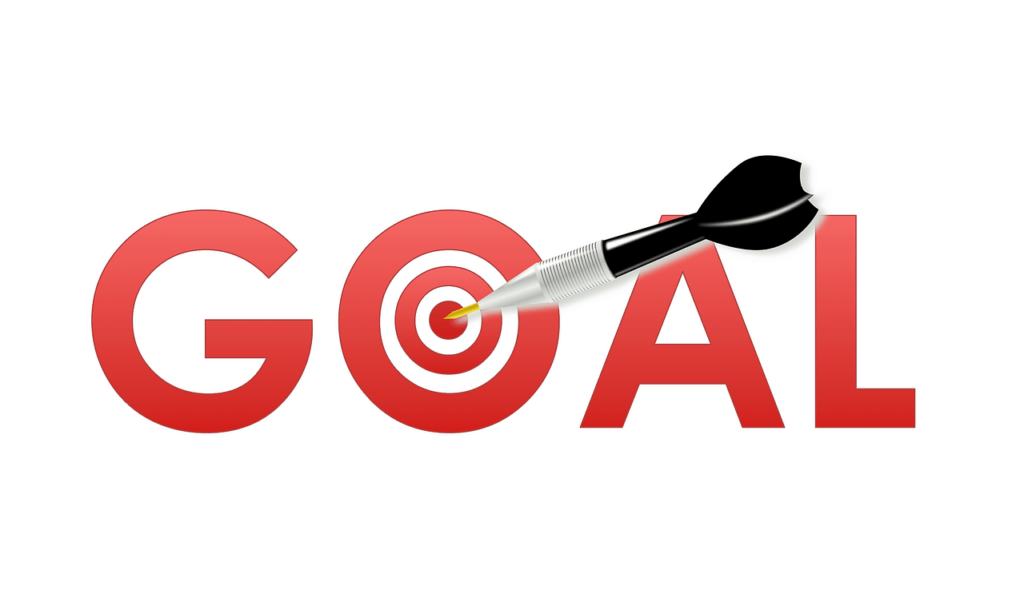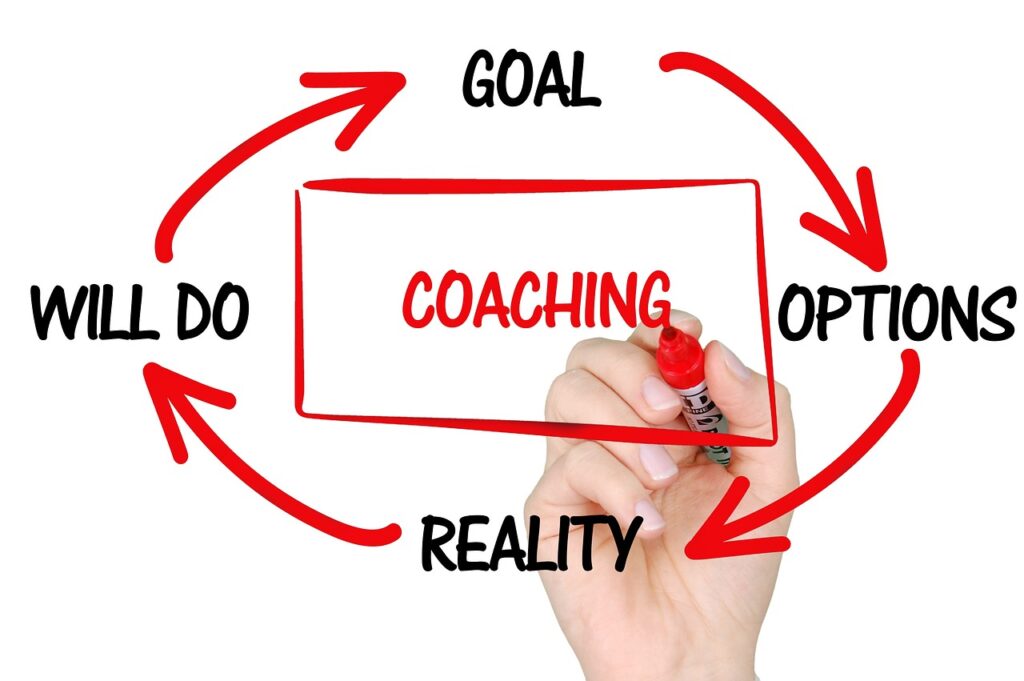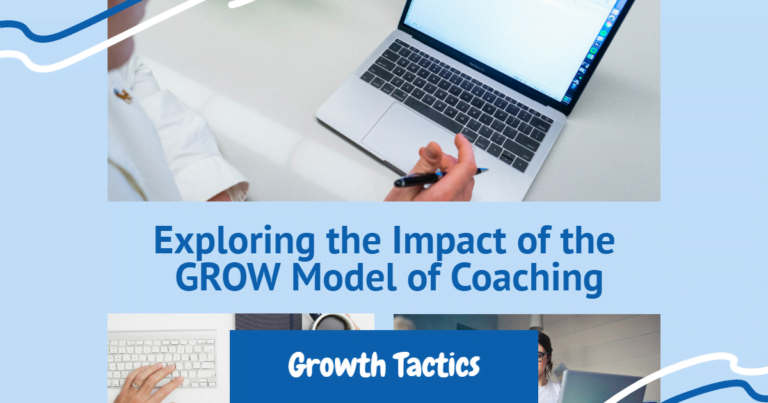The GROW model is a simple yet powerful coaching framework that helps managers and leaders have more effective coaching conversations. Developed in the 1980s by Sir John Whitmore, a leading figure in executive coaching, the GROW model provides a structured approach for setting goals, exploring solutions, and developing action plans.
GROW is an acronym that stands for:
- Goal
- Reality
- Options
- Wrap Up
The model takes managers and leaders through a logical four-step process to establish coaching objectives and explore ways to achieve them. It provides an easy-to-remember set of coaching tools to help improve team member performance through focused, collaborative conversations.
The GROW model has become an internationally recognized coaching model used by executive coaches, performance consultants, and organizational development professionals. Though simple in concept, the grow framework helps managers gain confidence in coaching by providing them with an impactful structure for coaching conversations.

Jump To Section
G – Goal Setting
Setting a clear goal is a critical first step in any coaching conversation using the GROW model. The “G” stands for Goal and focuses on defining a clear objective that the coaching session will center around.
When using GROW, the coach starts by asking the coachee about what they want to achieve from the session. This helps get agreement from the coachee on the goal they will be working towards. Some example starter questions could be:
- What do you want to achieve in this session?
- What is the objective you want to accomplish?
- What goal would you like to set for our coaching discussion today?
The coach should guide the coachee to define a goal that is Specific, Measurable, Achievable, Relevant, and Time-bound (SMART). Having a SMART goal helps provide clarity on what success looks like and keeps the coaching conversation focused.
For example, if the goal is “I want to improve my presentation skills”, the coach can use questions to make this a SMART goal:
- How will we measure an improvement in your skills? By getting positive feedback scores over 8/10? (Measurable)
- Is that achievable based on where you are today? (Achievable)
- Why is improving your presentation skills relevant for you right now? (Relevant)
- When do you want to achieve this goal by? In the next 3 months? (Time-bound)
This helps the coachee define a clear, specific goal to work towards during the coaching session, such as “I want to improve my presentation skills to score over 8/10 in feedback surveys, within the next 3 months.”
With a well-defined SMART goal that both coach and coachee agree on, the GROW model coaching session can stay focused and aligned on the desired objective.
R – Reality Checking
The R in GROW stands for Reality Checking. This step is about taking an objective look at the current reality and gaining a clear understanding of where the coachee is right now in relation to their goal.
The coach should avoid making assumptions about the coachee’s situation. Instead, they need to ask open-ended questions that allow the coachee to describe their current reality in their own words. Some examples of questions to ask:
- What is the current situation?
- What have you tried so far?
- What results have you achieved up until this point?
- What obstacles or challenges are you facing?
- How far along are you toward reaching your goal?
Reality-checking ensures there are no assumptions or misunderstandings about the coachee’s starting point. It provides an accurate picture of their capabilities, resources, and any constraints. This step is important to identify potential gaps between the current reality and the end goal. The coach can then explore options for closing those gaps in the next step.
Overall, reality-checking through targeted questioning allows the coach to truly understand the coachee’s perspective. This builds rapport, trust, and shared meaning which is vital for effective coaching.

O – Exploring Options
The O in GROW stands for options. This is the brainstorming phase of the coaching conversation where the coach helps the employee think of all the different possibilities and options to achieve their goal. The coach takes an open-minded approach, refraining from judging or evaluating the options during the brainstorming.
Some key aspects of exploring options:
- Brainstorm as many options as possible – quantity over quality at this stage. Every idea is valid.
- Think outside the box. Get creative with solutions.
- Draw on the employee’s existing skills, strengths, and resources. How can these help?
- Consider out-of-the-box possibilities – don’t limit them to the obvious.
- What would the employee do if time, money, and skills weren’t an obstacle? This frees up creative thinking.
- What would colleagues, friends, or mentors suggest? Get an outside perspective.
After generating a list of many options, the coach helps the employee evaluate the pros and cons of each one. Which seems most viable and aligned with the employee’s values? Which could have potential pitfalls? Looking at both positives and negatives provides greater clarity.
The employee is guided to choose one or more options to pursue. The coach’s skill lies in asking probing questions, spurring creative thought, and supporting objective evaluation – all without steering the employee in a specific direction. The employee remains accountable for choosing the path forward.
W – Wrapping Up
The final step in the GROW coaching model is wrapping up. This involves establishing the will, gaining commitment from the coachee, developing an action plan, and discussing potential obstacles.
The coach needs to ensure the coachee is motivated to achieve the goal set out in the G step. Questions to establish will could include:
- How motivated are you to accomplish this goal on a scale of 1-10?
- What will achieving this goal mean for you?
- Is this a must or should achieve for you?
Gaining commitment involves getting the coachee to commit to taking action. The coach should summarize the options discussed and get agreement on the way forward.
An action plan with specific next steps should be developed, including:
- What actions will be taken
- By when
- How will progress be measured
The SMART framework (Specific, Measurable, Achievable, Realistic, and Time-bound) can help create an effective action plan.
Finally, the coach should explore potential obstacles and how the coachee will overcome them. This demonstrates the coach is supporting the coachee in implementation. Questions could include:
- What might get in the way of you achieving this goal?
- How will you overcome these obstacles?
- What support do you need from me?
The W step wraps up the GROW coaching session by ensuring the coachee is committed to the actions needed to achieve the goal. It provides clarity on the way forward.

Using GROW for Employee Coaching
The GROW model provides an effective framework for coaching employees in the workplace. It helps managers and leaders develop the skills of their team members, improve performance, and empower employees to reach their potential.
Using the four steps of GROW allows managers to have structured coaching conversations that set clear goals and establish a path forward. The model gives managers the tools to partner with employees, understand their current situation, and create an action plan for growth and development.
During the Goal-setting phase, the manager works with the employee to establish specific, measurable goals that align with the employee’s role. Rather than vague development areas, the goal should be concrete and time-bound. For example, “Improve presentation skills to deliver 5 successful pitches to prospective clients within 3 months.”
The Reality checking step invites perspective and self-reflection from the employee. Questions help uncover their current skills, knowledge, and mindset related to the goal. The employee is prompted to think about what they have already accomplished and what they still need to achieve the goal.
Next, Exploring options allows the manager and employee to brainstorm and discuss multiple potential solutions and tactics. They can get creative about the approaches to build skills and confidence. The cons and benefits of each option are weighed.
Finally, Wrapping up ensures there is a clear action plan and next steps. The employee will walk away understanding the specific activities they need to undertake to make progress and eventually accomplish the goal. This step provides clarity and direction.
Using the GROW coaching model to develop employees empowers growth, improves performance, and builds alignment through collaborative goal-setting and planning.
GROW for Leadership Development
The GROW model provides an effective coaching framework for managers and leaders to develop critical coaching skills. By using the GROW approach, managers can have more productive coaching conversations with employees that drive performance and goal alignment.
The acronym GROW stands for Goal, Reality, Options, Way Forward. This simple framework helps managers structure coaching conversations using open questions to guide the employee through each step. It develops key coaching competencies in managers such as active listening, asking powerful questions, and creating employee buy-in.
Using GROW gives managers a leadership tool to have meaningful development discussions. The model helps managers gain coaching skills to:
- Establish employee goals that are specific, measurable, achievable, relevant, and time-bound
- Examine the employee’s current situation and progress so far toward the goal
- Brainstorm multiple options and solutions
- Define the steps the employee will take to achieve the goal
By leveraging the GROW model, managers can elevate everyday performance conversations to be more impactful coaching interactions. It provides a repeatable structure for managers to practice core coaching skills. Over time, integrating GROW improves managers’ ability to develop employees, create buy-in, and foster a coaching culture. The model ultimately helps leaders be better coaches and mentors for their teams.

Asking Effective Questions
The GROW model relies heavily on asking effective questions to guide the coaching conversation. Questions are a key part of the GROW coaching model, as they help uncover insights and drive the discussion forward. Coaches using GROW need to master the art of asking open-ended, probing questions that get to the heart of the matter.
There are different sets of questions that can be used at each stage of the GROW model:
Goal Setting
What do you want to achieve? What is your desired outcome? How will you know when you’ve reached your goal? What would success look like?
Reality Checking
What is the current situation? What have you tried so far? What results have you seen? What obstacles stand in your way? What resources do you have available?
Options Exploration
What are some potential options or paths forward? What are the pros and cons of each option? How might you weigh the different options? What solutions could address the obstacles?
Wrapping Up
What will your next steps be? What support or resources might you need? How will you stay accountable and committed? When will we revisit your progress on this goal?
Asking the right questions at the right time is crucial for guiding the employee through an insightful, productive coaching session using the GROW model.
Putting the GROW Model into Practice
The GROW model provides a simple 4-step framework for structuring a coaching session, but it still requires skill and practice to utilize effectively. The power comes in following the model while maintaining flexibility based on the employee’s needs. Managers gain experience by asking the right questions and guiding without prescribing the answers.
To put GROW into practice:
- Set aside dedicated time for a coaching session with an employee. Explain you’ll be using the GROW model as a framework.
- Start with Goal setting. Ask the employee about their current situation and the goals they have. Ensure the goals are specific, measurable, achievable, relevant, and time-bound.
- Move to Reality checking. Ask questions to understand the employee’s current reality and how far along they already are toward their goal. What progress have they made so far? What obstacles stand in their way?
- Next, Explore options together. Brainstorm potential solutions and the pros/cons of each. Avoid prescribing the answers – let the employee think through different paths forward.
- Finally, Wrap up with clear next steps. Ensure you both agree on concrete action items for the employee to take going forward. Set a timeline for follow-up.
The key is asking thoughtful questions to guide the employee through the steps while allowing them to take ownership of the process. With practice, managers gain experience and confidence in facilitating more effective coaching conversations.
Benefits of the GROW Coaching Model
The GROW model provides a simple yet effective framework for coaching conversations. Its acronym structure gives coaches and managers a focused way to structure coaching and mentoring sessions with employees. Some key benefits of using the GROW coaching model include:
- Simple and effective framework – The GROW model is easy to understand and apply. Its four-step process provides a clear path to goal achievement through setting goals, exploring reality, generating options, and developing action plans. The model gives coaches a straightforward structure to follow.
- Focused conversational structure – By following the GROW sequence, coaches can have focused, purposeful coaching conversations. The model provides an agenda and flow rather than an unstructured discussion. Coaches can use the framework to guide the employee through a logical progression.
- Applicable in many situations – The simplicity of the GROW model makes it a versatile coaching framework that can be used for many coaching objectives. It works for goal setting, improving performance, developing skills, overcoming challenges, and more. The model is effective in both individual and group coaching.
- Promotes goal achievement – The emphasis on establishing goals and mapping out actions to reach them helps drive achievement. The reality-checking and options steps provide reflection and ideas to enable the goals. The model promotes accountability through an action plan.
Wrapping It Up
In conclusion, the GROW model of coaching helps individuals and teams set clear goals, assess current realities, consider various options, and establish concrete action plans. This coaching framework has demonstrated its ability to support personal and professional development, enhance performance, and drive positive outcomes in a variety of contexts. The GROW model serves as a valuable tool for coaches and individuals seeking to achieve growth and success.


